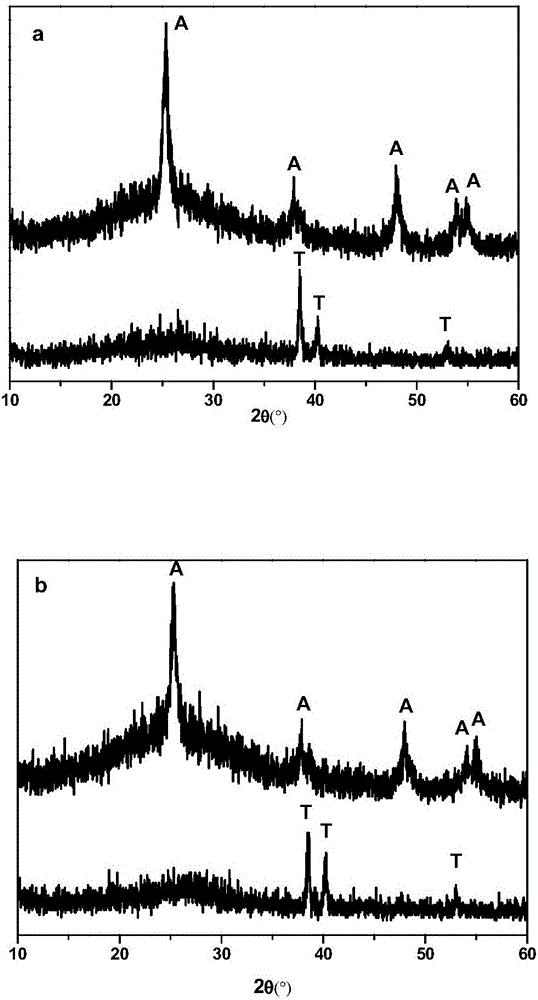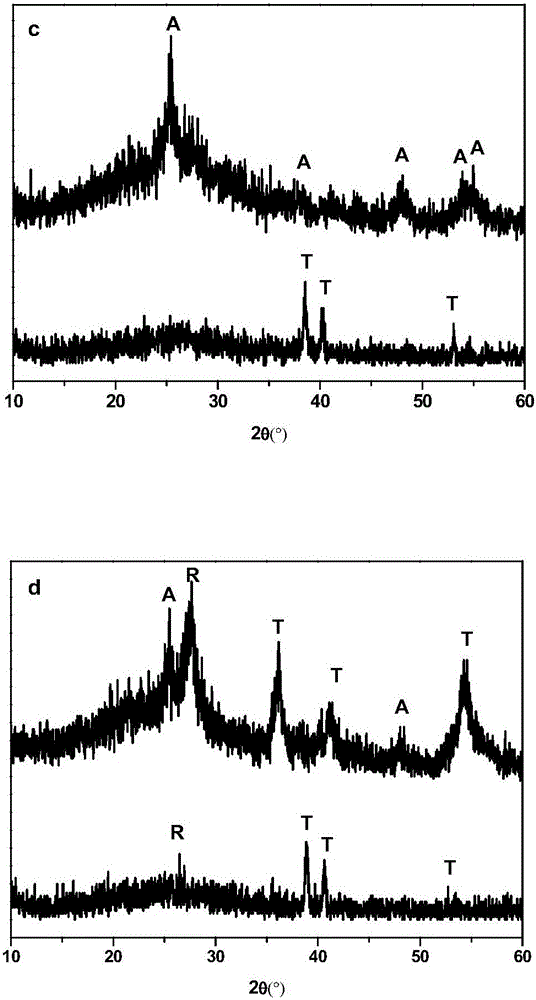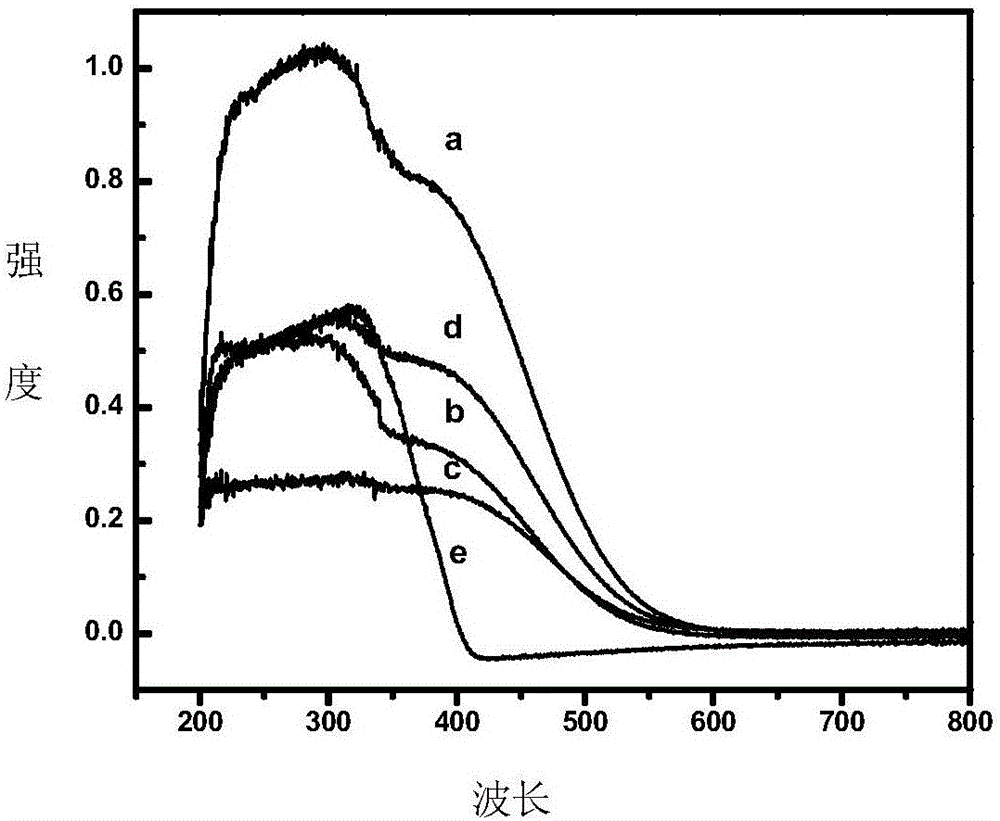Method for preparing rubidium sulfate-doped improved titanium-based TiO2 film photocatalyst
A technology of photocatalyst and rubidium sulfate, applied in physical/chemical process catalysts, chemical instruments and methods, chemical/physical processes, etc., can solve the problems of inability to absorb visible light and poor photocatalytic effect, so as to improve photocatalytic degradation efficiency, Improvement of utilization efficiency and high efficiency effect
- Summary
- Abstract
- Description
- Claims
- Application Information
AI Technical Summary
Problems solved by technology
Method used
Image
Examples
Embodiment 1
[0042] Rubidium sulfate-doped modified titanium-based TiO 2 Thin film photocatalyst material, using in-situ growth synthesis method, doped with Rb 2 SO 4 For TiO 2 The surface structure of the film is modified, and the original TiO 2 An oxidized film is formed on the surface of the film, which is composed of a microsphere structure, and is applied to photocatalytic degradation of organic dyes.
[0043] The rubidium sulfate-doped modified titanium-based TiO described in this article 2 The preparation method of the thin film photocatalyst material includes the following steps:
[0044] Step 1: Polishing the titanium sheet
[0045] The titanium sheet is first physically polished, and the titanium sheet is polished with 600Cw, 800Cw, 1000Cw, 1200Cw sandpaper, and cut into a uniform 3cm×1.5cm specification; then the above titanium sheet is chemically polished, and the physically polished Titanium sheet immersed in HF and HNO 3 Polished in a polishing liquid with a volume ratio of 1:10 for...
Embodiment 2
[0056] Rubidium sulfate-doped modified titanium-based TiO 2 Thin film photocatalyst material, using in-situ growth synthesis method, using hydrothermal synthesis method, doped with Rb 2 SO 4 For TiO 2 The surface structure of the film is modified, and the original TiO 2 An oxidized film is formed on the surface of the film, which is composed of a microsphere structure, and is applied to photocatalytic degradation of organic dyes.
[0057] The rubidium sulfate-doped modified titanium-based TiO described in this article 2 The preparation method of the thin film photocatalyst material includes the following steps:
[0058] Step 1: Polishing the titanium sheet
[0059] The titanium sheet is first physically polished, and the titanium sheet is polished with 600Cw, 800Cw, 1000Cw, 1200Cw sandpaper, and cut into a uniform 3cm×1.5cm specification; then the above titanium sheet is chemically polished, and the physically polished Titanium sheet immersed in HF and HNO 3 Polished in a polishing l...
Embodiment 3
[0070] Rubidium sulfate-doped modified titanium-based TiO 2 Thin film photocatalyst material, using in-situ growth synthesis method, using hydrothermal synthesis method, doped with Rb 2 SO 4 For TiO 2 The surface structure of the film is modified, and the original TiO 2 An oxidized film is formed on the surface of the film, which is composed of a microsphere structure, and is applied to photocatalytic degradation of organic dyes.
[0071] The rubidium sulfate-doped modified titanium-based TiO described in this article 2 The preparation method of the thin film photocatalyst material includes the following steps:
[0072] Step 1: Polishing the titanium sheet
[0073] The titanium sheet is first physically polished, and the titanium sheet is polished with 600Cw, 800Cw, 1000Cw, 1200Cw sandpaper, and cut into a uniform 3cm×1.5cm specification; then the above titanium sheet is chemically polished, and the physically polished Titanium sheet immersed in HF and HNO 3 Polished in a polishing l...
PUM
 Login to View More
Login to View More Abstract
Description
Claims
Application Information
 Login to View More
Login to View More - R&D
- Intellectual Property
- Life Sciences
- Materials
- Tech Scout
- Unparalleled Data Quality
- Higher Quality Content
- 60% Fewer Hallucinations
Browse by: Latest US Patents, China's latest patents, Technical Efficacy Thesaurus, Application Domain, Technology Topic, Popular Technical Reports.
© 2025 PatSnap. All rights reserved.Legal|Privacy policy|Modern Slavery Act Transparency Statement|Sitemap|About US| Contact US: help@patsnap.com



